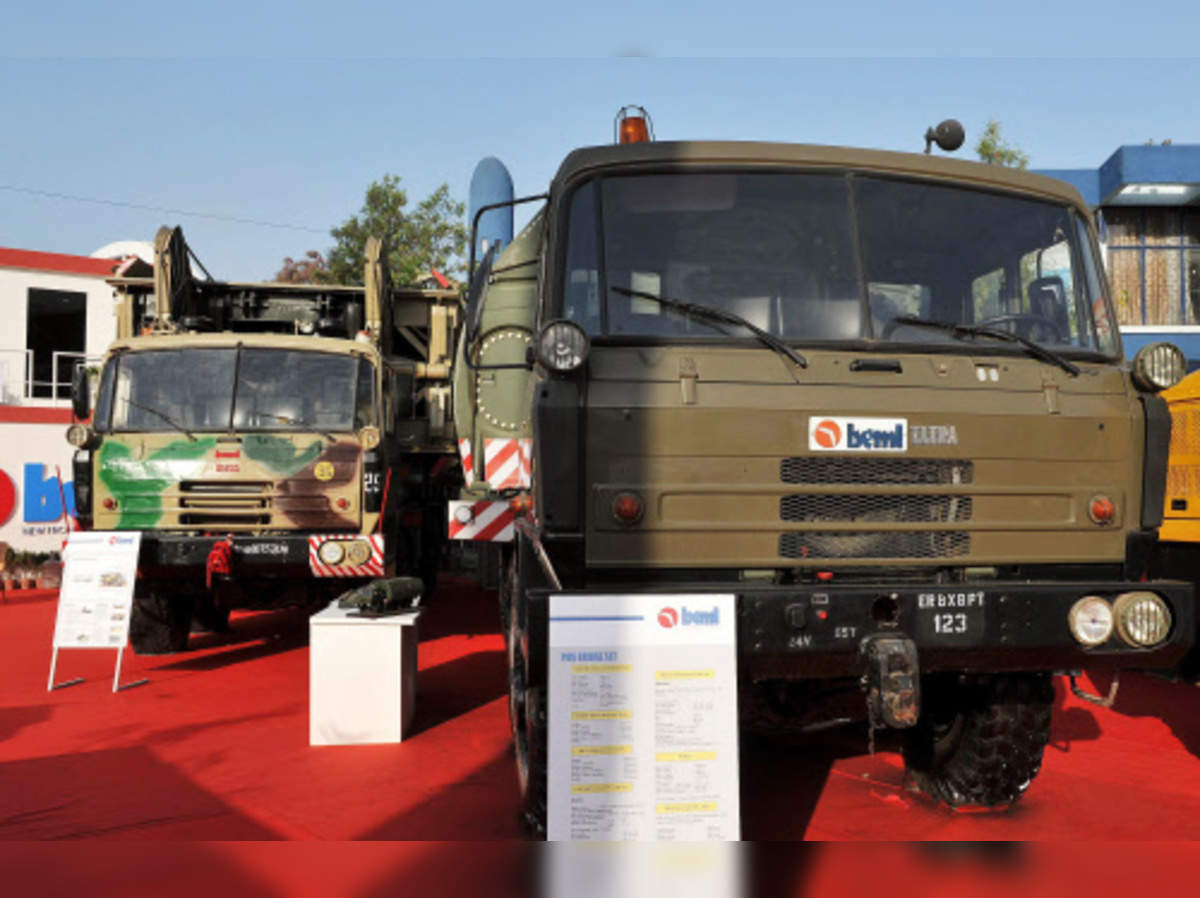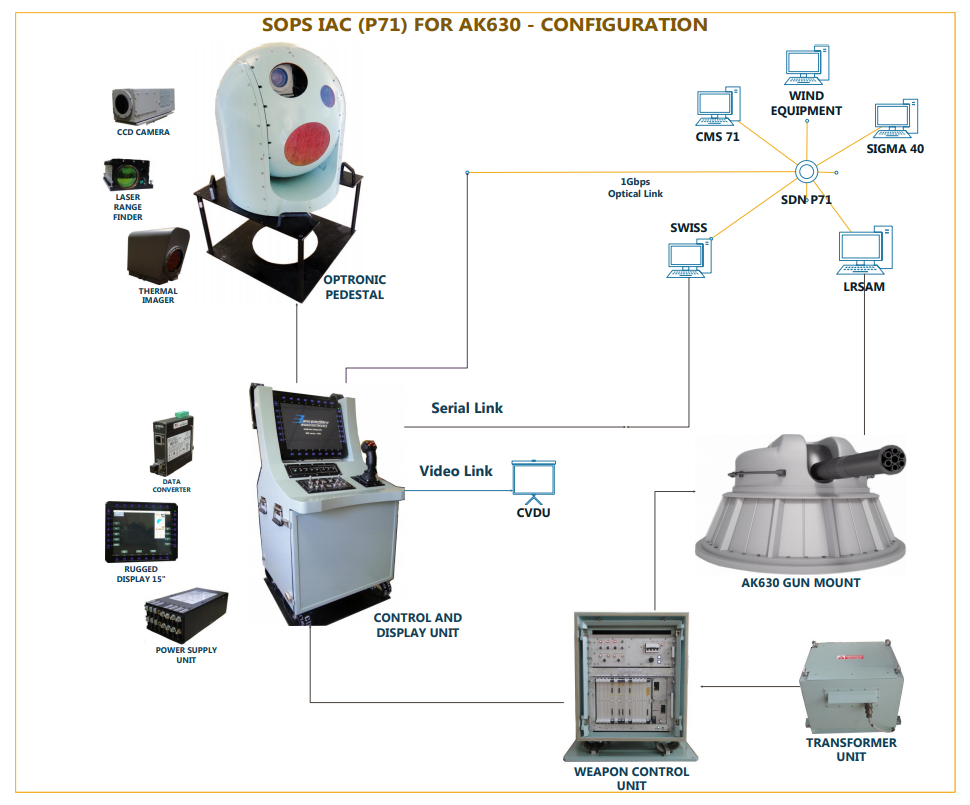AFI
SOURCE: AFI

Recent satellite imagery has revealed the deployment of a Chinese-made HQ-9 air defense system at the Karachi Cantonment by the Pakistan Army. The system, capable of engaging aerial targets at a range of up to 125 kilometers, represents a significant enhancement to Pakistan’s air defense capabilities.
The HQ-9, a high-to-medium altitude air defense system, was inducted into the Pakistan Army in 2021. Its deployment in Karachi, a major economic and strategic hub, underscores Pakistan’s efforts to bolster its air defense network in the face of perceived threats.
Continue readingSOURCE: AFI

The Indian Army has long relied on TATRA trucks, manufactured under license by Bharat Earth Movers Limited (BEML) in India, as the backbone of its logistics and transportation fleet. These robust trucks have served the military well for decades, particularly during the 1980s and 1990s, when their design and capabilities were state-of-the-art. However, in an era where technology and environmental standards have significantly advanced, the continued use of these outdated vehicles raises important questions about their suitability for modern military needs.
The TATRA trucks, originally designed by the Czech company TATRA, became synonymous with durability and reliability, capable of navigating the most challenging terrains. Their modular design, including a unique independent suspension system, made them ideal for the varied and often harsh conditions encountered by the Indian Army. Over the years, these trucks have been used for a range of military applications, from transporting troops and equipment to serving as platforms for missile launchers.
Continue readingSOURCE: AFI

Throughout the ongoing conflict in Ukraine, Russian fighter jets have demonstrated their effectiveness and lethality, especially near the frontlines. Among the most formidable aircraft in the Russian arsenal are the Su-35S and the MiG-31BM, equipped with advanced long-range air-to-air missiles. The Su-35S, armed with the R-77-1 missile, and the MiG-31BM, carrying the R-37M missile, have proven to be significant threats to Ukrainian aircraft. According to a recent study, these long-range missiles, particularly the R-37M, have shown remarkable success against Ukrainian fighter planes, establishing Russian air superiority in many contested areas.
The R-37M missile, deployed by the MiG-31BM, is designed to target high-value airborne assets such as tankers, Airborne Warning and Control System (AWACS) aircraft, and other Command, Control, Communications, Computers, Intelligence, Surveillance, Target Acquisition, and Reconnaissance (C4ISTAR) platforms. The missile allows the launch platform to remain out of the reach of any escorting fighter jets, enhancing the survivability of Russian aircraft while delivering lethal strikes against critical enemy assets.
Continue readingSOURCE: AFI

The Indian Space Research Organisation (ISRO) has reached significant milestones in the development of its Hypersonic Air-breathing Vehicle with Airframe-integrated Scramjet (HAVA). This ambitious project aims to enhance India’s capabilities in hypersonic flight technology, a critical area of research with profound implications for both civilian and defense applications. Recent advancements in the HAVA project highlight ISRO’s continued progress toward realizing this cutting-edge technology.
One of the critical achievements in the HAVA project is the successful completion of its aerodynamic characterization. This phase involved detailed analysis and testing to understand the vehicle’s behavior in hypersonic conditions, ensuring that the design meets the rigorous demands of high-speed flight. The results provide valuable data that will guide the further development and refinement of the HAVA vehicle, ensuring stability and efficiency during operation.
Continue readingSOURCE: AFI

The successful flight test of India’s Phase-II Ballistic Missile Defence (BMD) system is a significant stride towards bolstering the nation’s security posture, particularly in the context of potential threats from China.
This achievement carries profound implications for India’s strategic landscape.
Continue readingSOURCE: AFI

A significant milestone was achieved in the Indian Navy’s modernization efforts as the lead ship of the P17A frigate class, INS Nilgiri, embarked on its maiden sea trial. This momentous event marks the culmination of years of dedicated work by the Indian Navy, the Ministry of Defence, and the Mazagon Dock Limited (MDL).
The sea trial comes an impressive 80 months after the block erection commenced at MDL. This remarkable feat underscores the efficiency and dedication of the teams involved, making INS Nilgiri the fastest-built lead ship of the Indian Navy’s large modern warships.
Continue readingSOURCE: AFI
Last year, Chief of the Indian Air Force (IAF), Air Chief Marshal Vivek Ram Chaudhari, emphasized the need for foreign collaboration in developing niche technologies for India’s ambitious 5th Generation Advanced Medium Combat Aircraft (AMCA) fighter program. In an interview with “BW Business World,” Chaudhari highlighted the critical importance of this collaboration to avoid delays and ensure the program stays on schedule.
The AMCA program, a key project for India’s defense modernization efforts, aims to develop an indigenous 5th Generation stealth fighter jet to bolster the Indian Air Force’s capabilities. However, Chaudhari expressed concerns about potential delays in developing certain indigenous components, which could lead to more significant delays in the overall program timeline.
Continue readingSOURCE: AFI

The Indian Air Force (IAF) equips its C-130J Super Hercules transport aircraft with the chin-mounted FLIR Star SAFIRE III EO/IR (Electro-Optical/Infrared) sensor system to enhance the aircraft’s operational capabilities. This sophisticated sensor suite plays a crucial role in improving situational awareness, navigation, and mission execution in diverse environments.
The FLIR Star SAFIRE III is a multi-sensor system that integrates advanced electro-optical and infrared imaging technologies.
Continue readingSOURCE: AFI

Pakistan has reportedly received a fresh batch of Akinci Unmanned Combat Aerial Vehicles (UCAVs), further bolstering its military capabilities. The delivery of these advanced drones marks a significant milestone in Pakistan’s efforts to modernize its armed forces.
The Akinci UCAV, developed by Turkish Aerospace Industries, is a high-altitude, long-endurance drone capable of carrying a variety of payloads, including precision-guided missiles and surveillance equipment. Its advanced features and capabilities make it a valuable asset for military operations.
Continue readingSOURCE: AFI

A high-level delegation from the Brazilian Navy, led by Commander of the Brazilian Navy Admiral Marcos Sampaio Olsen, visited Mazagon Dock Limited (MDL) today. The delegation was warmly welcomed by the MDL team, led by the Commander.
The Brazilian Navy delegation toured an under-construction warship at the MDL shipyard, as well as the submarine facilities. They also visited the MDL Heritage Gallery, which showcases the shipyard’s rich history and achievements.
Continue readingSOURCE: AFI

The “Pratigya 2024” exhibition, held from August 22 to August 24 in Bhiwani, Haryana, provided a comprehensive platform for defense organizations and technology innovators to showcase their latest advancements. Among the participants was Advanced Weapons and Equipment India Limited (AWEIL), a prominent player in India’s defense sector, known for its expertise in the design and manufacture of advanced weapon systems. AWEIL’s exhibition highlighted its commitment to advancing India’s defense capabilities through innovation and indigenous development.
At the “Pratigya 2024” exhibition, AWEIL showcased a wide range of its cutting-edge weaponry and defense equipment, demonstrating the company’s technological prowess and its ongoing efforts to strengthen India’s defense infrastructure. Key highlights of AWEIL’s showcase included:
Continue readingSOURCE: AFI

With Japan loosening its grip on defense exports, a new chapter in India-Japan military collaboration could be underway. While the first potential sale might be a “Unicorn” naval stealth antenna for Indian warships under a technology transfer agreement, India’s true interest lies deeper – in acquiring expertise for its ambitious 12-ship diesel-electric submarine Project-76 program.
Sources at idrw.org report India’s keenness on specific Japanese submarine technologies, particularly material and battery management systems. These are crucial for the silent and efficient operation of submarines, areas where Japan boasts a world-class reputation.
Continue readingSOURCE: AFI

A significant milestone has been achieved in the indigenous production of the BrahMos supersonic cruise missile, as confirmed by a company spokesperson to Sputnik. The manufacturing process for this potent weapon has now reached a 70% level of indigenization.
The BrahMos missile, a joint venture between India’s Defence Research and Development Organisation (DRDO) and Russia’s NPO Mashinostroeniye, has been a cornerstone of India’s military modernization efforts. The increasing level of indigenization in its production is a testament to the country’s growing self-reliance in defense technology.
Continue readingSOURCE: AFI

Bharat Electronics Ltd. (BEL), a state-run defense equipment manufacturer in India, has announced the securing of new orders valued at ?695 crore. These orders encompass a wide range of advanced defense technologies, including Combat Management Systems, Communication Equipment, Stabilized Optronic Pedestals, and various upgrades, spares, and services. This achievement underscores BEL’s pivotal role in strengthening India’s defense capabilities and its ongoing commitment to the “Make in India” initiative.
BEL’s newly secured orders highlight the company’s expertise and versatility in developing and supplying critical defense technologies. The ?695 crore worth of orders includes:
Continue readingSOURCE: AFI

The Indian Space Research Organisation (ISRO) showcased a scaled model of its upcoming Surya NGLV (Next-Generation Launch Vehicle) rocket at the National Space Day event in Delhi. During the event, ISRO shared more detailed information about this advanced rocket, highlighting its mission objectives, new technologies, and capabilities. The Surya NGLV represents a significant step forward in India’s space ambitions, offering enhanced payload capacities and incorporating cutting-edge technologies.
The Surya NGLV is designed to be a partially reusable launch vehicle, aligning with ISRO’s goals of achieving cost-effective and sustainable space missions. It is tailored to meet India’s future requirements for launching heavier and larger payloads, including human-rated missions. The Surya NGLV will have a payload capacity of up to 30 tons to Low Earth Orbit (LEO) and 10 tons to Geostationary Transfer Orbit (GTO). This substantial payload capability will enable ISRO to undertake a broader range of missions, from deploying large constellations of satellites to human spaceflight endeavors.
Continue reading